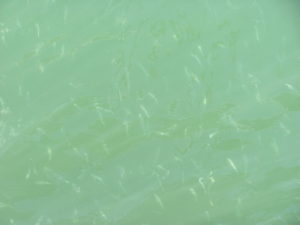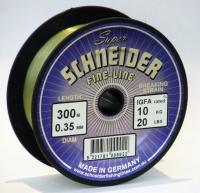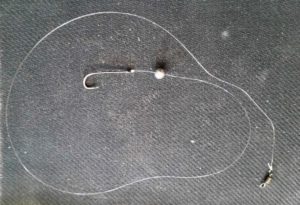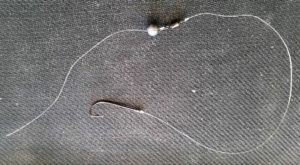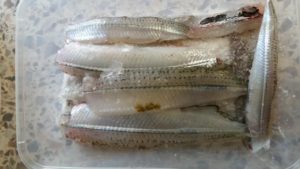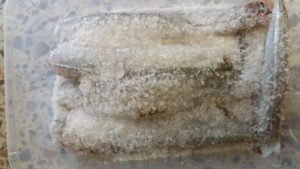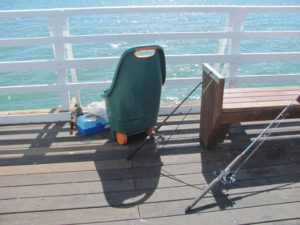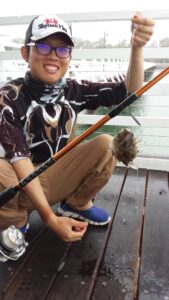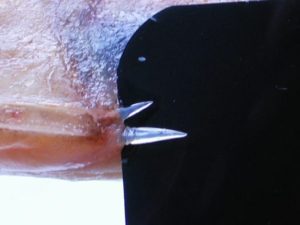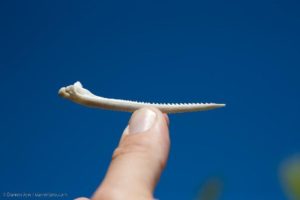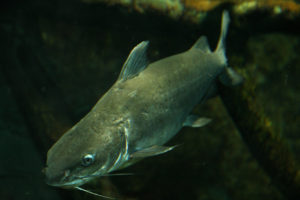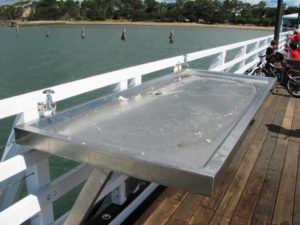Keeping it Simple, Jetty Fishing Basics for Beginners
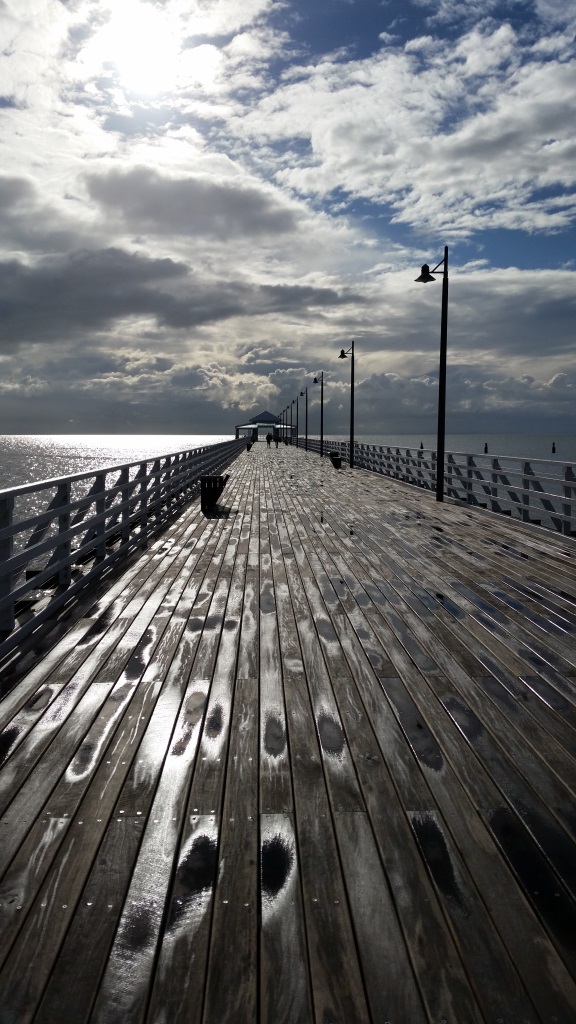

Why are people drawn to Jetty Fishing or Pier Fishing?
Most structures like a Jetty or Pier can be fished when the winds are up, the clouds have moved in or when you have no other option than to be land based.
Jetties and Piers are like an Artificial Reef for the hundreds of different species that use it to feed, hide from predators or just hang around in their schools waiting for the opportunity to breed or grow large enough to move out into deeper waters.
Some of the most common species you will find are Bream, Whiting, Flathead, Moses Perch, Gar, Herring, Hardy Heads, Mullet, Pike, Butter Fish, Trevally, Queenies, Butter Bream, Sharks, Shovel Nose Rays, Tailor, Toad Fish and of course Cat Fish!
Bait Fish
Smaller fish like Herring and Hardy Heads tend to stay under or close to the Jetty where they feel it is safe to hide from the larger species like Bream, Tailor and Moses Perch who love to attack them at any opportunity.
The soft corals, barnacles, rubble and other debris provide perfect hiding places or obstacles for when they are being attacked.
Fishermen also prey on these small species as they are an ideal bait supply, Herring, Hardy Heads and Gar can make awesome live baits, dead baits or strip baits around the structure.
It is a great area to take the kids as you have more control on where they go and you can keep a better eye out as you normally fish in a smaller area which makes for a great family day out.
Jetty Fishing exposes kids to a whole new world of fishing and many catch their first fish be it a Toadie, Bream or Whiting.
Given that many species live in such a close proximity to each other the kids are bound to end up with varying species in just one small area.
Jetty Fishing with Hand-lines

Many people think that to go jetty fishing you need special rods and reels.
Well I started off as a youngster jetty fishing on the Urangan Pier in Hervey Bay using the old hand me down Hand-line!
I used that hand-line whenever I had the chance to get out there fishing and I caught a barrel load of fish.
I would rig up for bait fish like Herring and Hardy Heads and I would use them as bait for Bream and Flathead.
The line on the old reel was heavier than normal, in around the 15lb mark but it meant getting the fish over the rail and onto the dinner plate.
It also helped create awesome memories and kept me out of the house for hours on end.
Hand-lines were and still are widely used for the larger species as well, it was not uncommon to see Mackerel and small Tuna even Sharks caught on heavy duty hand-lines.
It was obviously harder work and it created a great spectacle for onlookers as the fight went on and the odds were about 50/50 of who would win the battle!
So don’t be shy about getting back to the grass roots and dropping a hand line into the bucket for your next trip out to go Jetty Fishing!
Rods
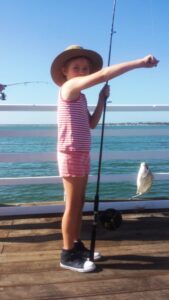
Now everyone will tell you what they think best rod to choose when fishing from a Jetty and they will be right because it is what they use!
There is no right or wrong answer to the question but more to the point – What have you already got to use or if going a new outfit, what is your budget?
Keep it simple, a 2-4 or 3-6kg rod be it Graphite or Fiberglass it really does not matter, however my personal preference is a Fiberglass Rod as they tend to be a little more forgiving when they get dropped or if you pull a larger fish over the railings.
On the down side they are just a little bit heavier but most times it will be leaning against the rails anyway.
I like to use a 7ft stick (Okuma LRF) as I can attempt to steer fish away from the pylons a bit easier (Not that it always works, the fish win a few rounds too!)
One of the key reasons I use this rod is that I use it for most other things and it is one of my go to rods also I fish with very light lead if any and this rod helps me to flick the bait where I want it under the jetty.
Now on the other end of the scale, my wife uses a 4ft kids fibreglass rod and a little 1000 Sienna reel and more often than not I would be served up a piece of my favourite Humble Pie as she brings fish after fish over the rails and she would do the same while we are out chasing Squid…
So if you have a rod that you really enjoy using, use it, from a 13 foot Surf Rod to a 4 foot kids special, the fish will not be able to tell one from the other!
Reels
When trying to work out which reel is going to be best to use out there, think of what we just covered on the “Rods” segment, if you have a favourite…. Use it.
Just so long as it is serviceable and you have a decent line to match then you are pretty much there.
I will use on average between 4-10lb Braid or a 12-15lb mono (Normal fishing line) for just about everything I want to catch on the jetty
I would normally target: Bream, Whiting, Flathead, Tailor and Squid as standard range.
I don’t normally target Shark from the jetty as most times I cannot get them safely over the rails without harming them in some way.
Back to your reels, a 1000 – 2500 series reel is ample for the day to day Bread and Butter species fishing.
Keeping it reasonably small also makes it easier for the kids as well.
I recently spoke to Alvey Reels Australia and we think we came up with a winning contender for a no fuss, virtually no maintenance and definitely kid friendly combo.
A 500B reel and a Glass rod in the 6ft range, this will provide a low cost and robust alternative to the $200+ set ups that some places insist you use. Keep it simple……..
Hold Onto Your Rod!
Another consideration when fishing with the smaller kids is that they can be easily distracted and they can put the rods down, this is a great chance for the fish to strike and rip that rod & reel over the side never to be seen again!
I watched a father casting his line out towards a telescopic rod which was floating (You don’t see that every day!) and he managed to get it back.
I asked him how it ended up in the drink, he simply pointed to his two year old, yep everything looks better in the water!
If you are taking the little ones out, grab a piece of VB cord and secure that rod, leave enough VB cord so you can move around a bit.
In the end a small piece of VB cord can be the difference between a great trip out on the Jetty with the kids and a day you won’t forget as you now need to replace that favourite old rod & reel!
Line
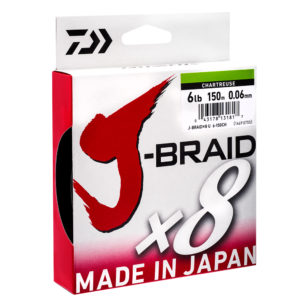
Braid or Mono? There are arguments for and against both of these, with Braid you can cast further, it cuts through the water better and it is much more sensitive.
However, around the pylons it will cut through on the barnacles like a hot knife through butter! On the up side, when the water is flowing the Braid having a smaller diameter will cut through the water easily allowing my bait to stay in the region I need it.
Mono
Mono-filament lines are designed to take abrasion and stand up to a lot more rugged fishing but can be less responsive.
It is a lot easier for the kids or beginners to use as any knots will come out with less effort where Braid will tend to knot up with much less chance of coming out.
I use both and I enjoy my time out there, I loose just as much tackle and catch just as many fish with braid as I do Mono, I would like to think I have just as much fun with either one.
Tackle – How Much Do I Take?
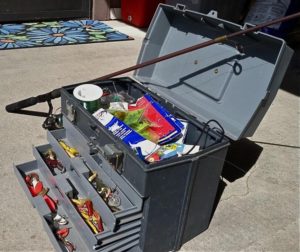
What do I need to take out when jetty fishing?
Well like most fisho’s…. Take Everything! Seriously I have severely down sized the amount of gear that I carry anywhere these days because you just don’t need to take everything with you.
My everyday tackle needs include: Long-shank No12, No6, No4 and No2 and I like these in a “Bait-holder style if I can get them.
I also like to have the Mustad Viking in the 540 style (Bronze) in size No2.
I use this as my Go Too hook when I need something a bit different or targeting bigger Bream & Flathead.
This style is also my favourite for big Tilapia and Carp!
More Hooks!
I also favour the Tru-Turn 711 in size No1 as a great all-rounder and if I find the fish are Mouthing the baits rather than biting, the kink in the hook allows for the accidental hook up a lot more…
Last but not least I carry a couple of Gang Hooks 4/0, 1/0 and #1 cover the bases and will get you out of pickle if the larger fish turn up without notice.
I like the Tru-Turn in the gangs for two reasons, they have a swivel which makes it so much easier to bait up and they fold away a lot smaller and easier than conventional gangs, it is all about saving room.
I still take an assortment of Plastics & Jig Heads, hooks, sinkers and swivels, I still carry a couple of different sized Leader Material, a Ruler with up to date legal sizes, a pair of Long Nosed Pliers, a pair of Braid Scissors and a pair of Plastic Lip Grips and a knife.
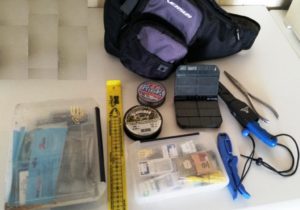
I keep it simple, Plastics & Jig Heads in the larger box, Hooks & scissors in the medium box and Sinkers & Swivels in the smaller flip box.
Everything else either goes in the external pockets of the shoulder bag or neatly inside and the whole lot weighs less than 2kg.
I use the Versus shoulder bag as I have found it allows me to pack everything in, it is padded on the shoulder strap and on the back where it rubs.
If I am walking the bank or walking up and down the Jetty, it is comfortable, light and easy to put on and take off.
The other consideration I had to look at was “Can it carry my Freshwater Tackle as well as my Saltwater Tackle”
With this I found I could do both very easily, I use 95% of the same gear for both styles of basic fishing!
Non Essential Weight
If I take kids out or for when mates tag along, there is normally more gear than needed in the box as I now buy a box of 25 or 50 hooks that I use the most rather than a 10 pack, this works out cheaper too!
Sinkers can add up in weight so I carry 10 or 15 “00 & 0” sizes and a small mix of “1, 2 & 4 Balls”
With my sinkers I still buy them in bulk but I leave 90% of them at home in a container.
When I get back home I work out what I lost during that session and I replace them. You do not need to carry 50 of each sized sinker out with you, keep it light.
If you have a Tackle box that you use, apply the same principle, refine what you need to carry and at the end of the trip your arms will thank you for it.
Rigs
One of my favourite rigs for jetty fishing is a simple one, I attach the Leader to the main line either directly or by using a swivel.
I place a “00 or 0” sinker on and then I tie on a hook, bait up and flick back under the jetty of drop straight down.
The only down side to this rig is if I get bitten off or lose the hook I also lose the sinker but that is why I carry spares!
This rig I use for larger Bream, Moses Perch and smaller Cod under the Jetty or beside the pylons.
Another great all-purpose rig is the sliding sinker rig and the only difference is the placement of the sinker.
In this rig the sinker goes above the swivel and I have about 30cm of Leader then the hook is attached.
Using Braid
If you are using Braid, I attached a small piece of Leader to the braid, add the sinker to the leader then tie the leader to the swivel, attach another piece of Leader to the other side of the swivel and then the hook.
I sometimes use this rig with a slightly larger sinker for Whiting, Flathead and Bream where I need to cast away from the structure or Jetty.
Now if you are not sure on how to make up a rig you have a few options open to you:
- You can “Google’ it.
- You can buy “Pre-made” rigs or
- The preferred option is to drop into Tackle Land and let us show you from start to finish the easy way to rig up, we can answer your questions at the same time.
Tools
Pliers
One of the most important tools I carry when jetty fishing is a pair of Long-nose Pliers, this is the best tool for removing hooks that are just inside the mouth.
Also when you land a fish like the Happy Moment, Large Sea Toad or the Striped Scat you will want to keep your finger as far away from them as possible.
Fish Grips or Lip Grips
Now these are a great tools to have as well, they allow you to handle a fish and reducing the risk of getting spiked.
If you have kids and they are a bit nervous about picking up a fish for a photo, lip grips are the way.
Now I use Plastic Lip Grips and not Metal ones, firstly for reduced weight that I have to carry and secondly to allow for the least amount of damage to the fish when I release it.
If I don’t intend on keeping a fish then I make sure it goes back in the best possible condition.
Scissors
These are so universal, I can trim Tag Ends, I can cut off the line when a fish has swallowed the hook and if by chance I forgot the knife, which I do a fair bit, I can still cut up bait.
I rarely go for Top of the Range scissors as they do not float, I would hate to think how many pair have been kick into the water because “I will put them away later”
Bait
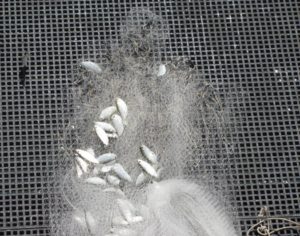
There are so many bait fish living around the average Jetty or Pier, you just need to decide which method you are going to use to catch what you need for your days fishing.
Cast Nets
For those just learning about jetty fishing or simply new to fishing I would strongly recommend heeding the Golden Rule…. “Keep it Simple” I would not recommend throwing a brand new Cast Net over the rails as the odds are against you getting it back in working order!
Bait Jigs
Stick with the time proven method – Bait Jigs. Simply tie one end to your main line and tie a sinker to the other, drop it over the side, let it hit the bottom and start a gentle lift and drop motion (Jigging).
If the bait is there you will stand a very good chance of having bait in the bucket before you know it.
Be mindful of “Local Council” Rules and Regulations regarding the use of Cast Net, it could result in hefty fines!
Hoop Nets
If you really want to use a net, consider a Hoop Net, this is the same mesh as a cast net on a metal ring.
You lower this gently into the water until it has about 60-80cm of water over it and start to throw small amounts of burley to attract the bait fish over the top of the net.
Once they are feeding over the net you quickly lift the net and surprise the fish.
Pick out the ones you want and return the rest to the water for next time.
Preserved
I like to catch as much of my own bait as I can, I will check out the area before I fish to see what is available whether it be Mullet, Gar, Hardy Heads, Herring or Yellow Tail Pike.
To gather my bait I will use either my Hardy Head drop net, Herring Jigs or a piece of red wool for the Pike.
Once caught use three easy steps to preserve them:
- I will scale and fillet them and place the fillets on a piece of paper towel to remove excess moisture.
- I grab the old trusty lunch box (or Chinese Takeaway Container) put a layer of salt down and lay the fillets skin side down until I have covered the bottom of the box leaving a small gap between each fillet.
- I then cover the fillets with another layer of salt, if I have more fillets I just keep layers and salt.
- Once the final layer of salt goes on I then put the lid on and put it in the fridge.
- I normally put it as far down and to the back as I can, this gives me about a week before the wife notices it and I cop some curry!
- You can use it after a couple of days by taking out what you need, brushing off the excess salt or if you go heavy handed with the salt like I do, give the pieces you take out a very quick rinse under cold water, paper towel dry and put in another small container. Refrigerate if you have leftovers after your trip (Down low and at the back of the fridge).
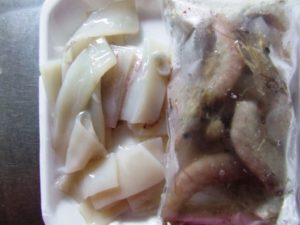
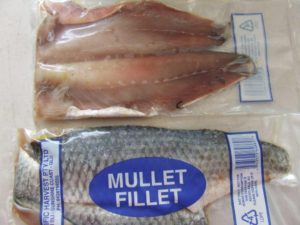
Frozen
There are some really good frozen baits available at your local Bait and Tackle Store, a few people don’t like frozen baits but they are convenient and they work.
Bait purchased from a Tackle Store is normally more fresh and in most cases “Local” due to the higher turn over of freezer stock but some late night locations can provide a reasonable bait at a pinch.
Normally Preserved Worms, 200g Prawns or 200g Squid are the chosen bait of many for Jetty Fishing.
For those with kids and are just going out for an hour or so, you can find combo packs in some freezers with Squid & Prawns ready to go!
Most times one child will want Prawns and the other Squid so grab a combo pack and make it easy on yourself and the wallet!
Other very effective frozen baits are Pilchards, Baby Blues (Smaller Pillies) Mullet Fillet, White Bait and Froggies so the selection does get difficult. If it gets too hard…. Keep it simple – Prawns or Squid will get you fish!
Fresh
Same as the Preserved bait to catch it with the exception of Crabs, Yabbies and Worms. With the Crabs I make sure that we all have shoes with sturdy soles as the rocks and Barnacle will cut your feet to shreds and you are also entering the home of Stonefish and Stingrays!
Crabs
I collect around rocky areas by lifting smaller rocks over very gently, I always watch where I grab the rock and I never grab it from underneath as this is where nasties can hide.
I normally go for the smaller crabs and most time I will gather no more than about 12 or so.
I keep them in a small bucket with a light layer of sand and out of heat and direct sunlight.
If I am using them the next day I will put the bucket in an esky at one end and at the other end I put a frozen milk bottle or ice brick, this keeps them chilled and healthy until the next day.
Important Note: If I don’t use them the next day I release them so they don’t go to waste and they are there for next time I need them.
Yabbies
A whole lot of family fun pumping Yabbies’, Grab a Yabby Pump, a Sieve, a Bucket and someone who hates picking them up!
Find the Yabby holes at low tide and start pumping but only gather what you need and leave some for next time you need them.
Yabbies are best used as fresh as you can but if you need to keep them overnight or for a couple of days, drain the water off and put them in a container with some clean wood shavings (You can get a small bag from most pet shops).
Pop them into the esky the same as Crabs. They will last for 2-3 days but remember to change the ice block twice a day.
Keeping Bait Fresh
A cheap foam esky and an Ice Brick is as simple as it gets to keep your frozen and fresh bait in the best condition while out on the Jetty.
Try to keep the lid on as much as possible or the sun will quickly turn it into a smell that will even keep the neighbour’s dog at bay!
Take out a couple of pieces of bait that you would use in a 15 -20 minute period and leave it in a shaded area.
This will give your bait in the esky a long survival time.
Keeping your bait alive:
- This can be tricky, the easiest way is to use a bait bucket with an air pump. Tie a sinker to the air stone which will keep it on the bottom and put more oxygen through the water.
- Don’t over crowd the bait bucket with live fish as they will use all the oxygen very quickly and they will end up being dead bait!
- Change the water regularly and try to keep the water cool and out of the sun.
- Alternatively you can use a bucket with holes, tie a sturdy rope to it and hang it from the jetty in the water. This method will keep the bait alive for as long as you need it.
Burley
I love a good Burley! When you burley the water it will bring in the bait fish, get those bait fish stirred up and before you know it the bigger guys will show up.
Normally, I like to make my own where I can and I keep it simple, left over prawn & crab shells, old bait, bread, tuna oil a hand full of sand and whatever else you want to throw in.
I will make up my burley by mincing everything up, adding the tuna oil and mixing again, last thing I add is a handful of sand.
The sand will get coated in the burley mixture and the oil, when it hits the water the sand will sink taking your burley with it and drawing them up from the deeper water.
Utilise a small burley bucket on a rope and tie it off so about ¾ of the bucket is submerged allowing the waves to take out bit at a time. But if you do not have one, an old Milk Carton with plenty of holes in it will also do the job.
If there is little wave action, just give the rope a gentle tug every now and them to disperse small amounts of burley.
Remember you only want to attract them not feed them….
Jetty Fishing for Gar
Gar are just an awesome fish to catch and there are normally oodles of them around jetties and piers.
I use the same rod, reel and line as I use for Bream, Whiting and Flathead.
The only change I make is the rig, for this I use a No12 Longshank Hook (Mustad 4540 ½ Longshank Kirby) a stick or bubble float and a couple of small split shot sinkers.
I start with the float about 60 – 70cm up the line, place the split shot about 5cm above the hook, bait the hook with a very small piece of Prawn, Worm or Dough Bait (They have very small mouths) and I am off.
If the Gar are deeper down I will adjust the float further up the line increasing the depth.
Most times you will find the bigger ones 2-3ft under the surface but they will rise to take your bait.
When you see action with the float, be gentle hooking them as you can easily pull the hooks. You will know when you have hooked them as they will leap from the water like mini Marlin!
If you want more info on Gar Fishing Techniques, check out this article: Gar Fishing Basics
Jetty Fishing for Bream

Bream just love to live around structure so that is where you are most likely to catch them, fish close to the pylons.
This will mean sacrificing a bit of tackle but it is worth it in the long run when you look at some of the monsters that lurch in the shadows of the pylons!
I do like to fish with as little lead as possible, a “00” “0” or sinker free rigs which allow the baits to float down naturally, teamed up with a bit of slack line you will increase your catch.
For more information on Bream Fishing Techniques check out this article: Bream Fishing Basics
Jetty Fishing for Flathead
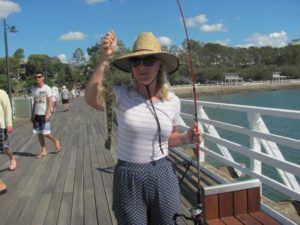
Generally Flathead will be found from the first few meters of the jetty or pier right through to the very end.
I always take a slow walk from the shallows and really check out the sandy areas along the jetty as they will show you how much life is out there.
When you see schools of baitfish getting spooked in the shallows there is a great chance that a very well camouflaged Flathead is lying in wait.
Sometimes if you watch you will see them moving to a new ambush position beside rocks or other structure laying on the sea floor.
Flathead Bait
Using Prawn, Blue Baits, Herring, Gars or Hardy Heads as baits works well, live Herring or Whiting if you can get them make awesome baits.
Note: Make sure you check current Size and Possession Limits for your State before you start using them!
A link to the QLD Recreational Fishing Guide is below.
I like to get the baits between 5 – 25m away from the jetty in a reasonably sandy bottom.
I generally use a 12–15lb Leader, a set of 3×1/0 or 2/0 Ganged hooks (For dead baits) and a No1 or 2 Ball or Bean Sinker.
For more information on Flathead Fishing Techniques check out this article: Flathead Fishing Basics
Jetty Fishing for Whiting
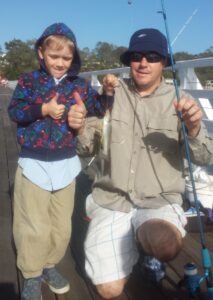
Whiting are just like Gar, lots of fun to catch and they almost catch themselves and will keep the kids (Both large and small) amused for hours!
The only gear you will need is No6 or No4 Longshank hooks (Prefer a Bait Holder Style), start with size No1 Ball or Bean Sinker and about 30-50cm leader and a small swivel.
For your bait, Cured Worm, Live Blood Worm, Prawn or stripped Squid will get you started.
The stripped Squid is normally harder to get off the hook and can last longer than the old Prawns.
If you are using Prawns, try peeling them and putting the meat on the hook, it takes a little longer but I find the catch rate is a bit better.
Now you can simply drop the line straight down or you can cast out a bit, it will depend on your casting abilities.
Whiting will come in close to the Jetty and more often than not you can get them a couple of meters from the start of the jetty at high tide.
There are normally plenty of Whiting to be caught out there some I would target these for the kids to keep their interest and if you keep missing the bite or hook up, drop down to a No8 or No10 and this will increase the chances of a good catch.
Jetty Fishing for Squid
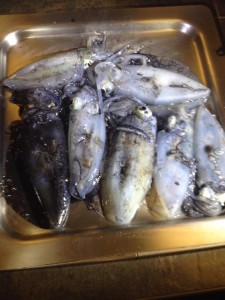
Another great pass time for the whole family is jetty fishing for Squid. Over the past few years it has really taken off and become a family favourite during the colder months of the year.
If you are already set up for Bream, Whiting or Flathead fishing then all you need to add are a few Squid Jigs, some warm clothes, a Beanie and your set!
Fished primarily at night these elusive hunters can be taken quite easily by fishing around the lights, casting out a Squid Jig and bringing it back in similar to a Plastic.
Arrow or Pencil Squid are by far the more sought after but you must have your wits about you or you may well get Inked!
When attacked or when they feel threatened they will shoot out a defensive ink spray, it does not harm you but it will stain your clothes and leave a dent in your pride…..
For more information on Catching Squid check out this document by Aaron Edwards: Squid Fishing Tactics by Aaron
Getting Your Gear Out There
If you only take a small amount of gear out on the jetty then it is easy enough just to carry it.
However if you find that you carry just about everything or if you need a hand free to help the kids then you can look at building a trolley system which you can store your gear on, pull it behind you or behind your bike!
There are so many different things you can build, adapt or buy to do the job while jetty fishing, it is only limited to your budget and imagination…
Jetty Fishing – Things that Bite, Sting or just look Down Right Ugly!
When you go Jetty Fishing you have this great picture in your head as to what a great time your going to have and all those awesome fish you are going to catch, well thing do not always go to plan.
Some of the most weird, ugly, scary and just nasty things I have seen come out of the ocean, I have encountered while out Jetty Fishing!
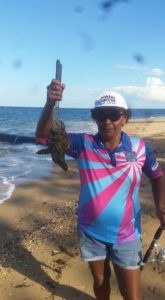
Stonefish would have to be at the top of the list for The Most Nasty!
These guys are more common than you think and if you have walked through local saltwater creeks or rocky beaches, chances are you have stepped close to one already without knowing it.
Best way to avoid getting stung by one of these uglies is not to touch it…
When you see it coming out of the water, get it close to the railing and get someone to cut off with a knife or pair of scissors, try not to do it yourself as this is when accidents happen.
Medical Treatment if Stung:
Stonefish are found in all coastal waters and some fresh water sites.
Although there are no reported deaths in Australia, stonefish stings can be potentially fatal.
Stone fish spine penetration can result in severe and persistent pain and in these cases the patient should be transported to the nearest hospital immediately for treatment. Antivenom is available.
Medical Treatment Information Sourced from: Qld Health Link
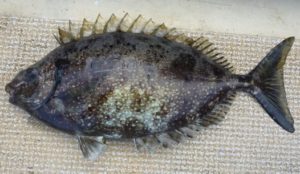
The most common Happy Moment. I think the person who named this one was a real hoot at parties!
I have had a sting from one of these and let me tell you the happiest moment was hours later when my hand did not feel like it was 15 times the normal size.
A bit dramatic? No way this thing hurt! They have spikes on top, underneath, in fact anywhere you want to grab it there is a spike waiting for you!!!!
Now some people actually fish for them, well that is great however this artical is targeted at the “New” fisho who needs to know this info so please “DO NOT TOUCH” again cut it off before it comes over the railing, it will live with a hook in it.
Medical Treatment Information Sourced from: Qld Health Link
Stinging fish, including butterfly cod, scorpion cod, cobbler, catfish, happy moments and Flathead, can produce painful injuries.
For these stings, soaking the affected area in hot but not scolding water (ideally 45 C) for up to 90 minutes may relieve the pain.
If pain persists, the sting has caused a deep wound, or other symptoms are present, the patient should see their local doctor.
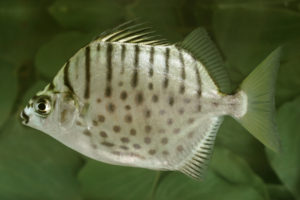
Scat or Striped Butterfish look really impressive and they give a fair account of themselves in a battle!
They are a solid fish and most people are impressed when the land one, however like the Happy Moment they will fight back with a particularly nasty string when they spike you.
This is another fish that has got the better of me and I payed the price with a nasty intense painful sting which lasted a few hours.
I wish someone had pointed this fella all those years ago!
To avoid the pain, donate the hook and cut it off at the rails and let it go.
Medical Treatment is as per the Happy Moment
Toad Fish
Toad Fish come in all shapes and sizes, they are slimy, prickly, really ugly and they have a set of chompers that Mr Ed would be proud of!
Now in putting the old Toadie down they are a key element in the Marine World.
We call them the “Garboligist” because they eat everything that no other fish wants to eat, a bit like the kids feeding the vegies to the family dog at dinner time.
We find so many of these guys left to die on Jetties, Piers and Boat Ramps where Cast Netters have caught them and just dumped them.
So when you catch one do the right thing and throw it back alive and you will be doing the environment a huge favor.
One thing you do need to watch out for is their teeth, like I said they have a cracking set of chompers and they will take out a chunk of flesh if you get too close to the pointy end.
Toad Fish have been known to bite a Whiting Hook in half! This is another one you can cut off at the rail and allow it to go back and clean up the waters for us.
Flathead Spikes
Flathead are not on the poisonous list but to a new fisherman it can provide a very nasty cut if not handled with care.
This is one that the kids will see more often and they can become really complacent.
Flathead have a couple of spikes on the side of their head which can delivery a really nasty and very painful gash.
I would recommend using a glove, Lip Grips or an old towel when handling Flathead.
Catfish Barbed Spine
Catfish
Catfish are another one to try and avoid if you can, they have three really nasty spine hidden under a layer of skin.
Once exposed these “Barb” like spikes will inflict a very painful wound.
What is worse, they are designed to go into the skin and not come out.
You will find these guys hanging around Jetties and Piers and will take just about any bait.
If you get a barb in you, you will want to seek medical treatment.
I was a bit careless one day and I scored a nice little cut, the pain was incredible! Avoid bringing them onto the Jetty and do not let the kids touch them!
Other Uglies you might find!
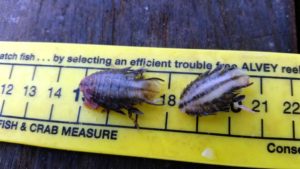
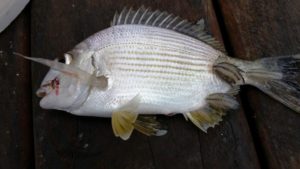
You will at some stage come across one or two of these guys, the are a type of Sea Louse, the have a body which almost feels like it is Armour Plated.
They attach themselves to fish generally down around the tail area where they burrow under the scale and bit into the flesh until they find a vein. Once attached and feeding these guys will keep on feeding for as long as they can.
When we come across them we use the back of a knife or a ruler and scrape them off, we ensure that we scrape down the fish in the direction of the scales.
We take care not to do any damage to the fish and then we release the fish to fight on again, the fish will have red blotches on it and maybe a little bleeding but they will heal very quickly.
We normally give the Sea Louse a quick unceremoniously “squash” and send them back in to be food for the other fish!
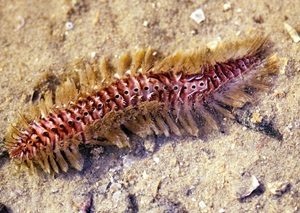
Sea Caterpillar’s (Bristle Worm)
These guys will eat just about anything they can get their mouth around! Prawns, Strip Baits and Worms don’t stand a chance once these spiky rubber-band mouthed hoovers get them in their sights.
You just need to watch out for their spikes,they are like fine needles and once in you they are very irritating! Once you get one up to the jetty, sacrifice the hook and don’t tempt fate, it is not worth it…..
Dirty Cleaning Station
Jetty Fishing Etiquette
When you venture out onto the jetty fishing you have a responsibility to yourself and others who use it as well, a lot of people just don’t care about the structure they are using or the people that will use it after them. There are just a couple of things that you should do:
- Place all of your rubbish and unwanted line & tackle in the bins provided or take it home with you.
- Do your best to clean the area before you leave.
- Return undersized and unwanted fish back into the water in good condition.
- Have an awesome time!
Things you should avoid:
- Throwing rubbish into the water.
- Cutting up bait on seats that people will use after you leave.
- Spreading your gear over a large area.
- Leaving unwanted bait, hooks and line on the jetty when you leave.
- Leaving the fish cleaning stations in a mess, they have taps so take 2 minutes and give it a clean.
The Jetty Fishing Checklist
How many times have you been out fishing and discover on arrival that you have left gear at home? For you we’ve compiled a guide to help get the most out of your trip.
It doesn’t matter if you’re a novice or expert fisho. our fishing checklist will help you make the most out of your trip. Obviously since everyone’s needs are different you won’t need to bring everything with you.
The idea of this checklist is to help guide to get you started, add or remove items as you see fit.
- Enough Rods, Reels or Hand-lines for everybody.
- Tackle Box, Spare Leader.
- Bait or Bait catching gear.
- Bait and or Filleting knife.
- Long Nose Pliers.
- Lip Grips to hold the fish for a photo.
- Hard to find but a “Long Handled Landing Net”
- Polarised Sunglasses to see through the water.
- Sunscreen.
- Insect repellent.
- Broad Brim Hat with a Lanyard or Cap.
- Wet Washer in a zip lock bag for the kids to wipe their hands.
- An old towel to hold the fish and wipe your hands.
- Camera to snap a shot of that Cracker fish!
- A current Fish Measure.
- A 10 or 20 litre bucket with a lid.
- A fold up chair if there are none out there.
- Drinking water and snacks for those slow moments between bites.
Legal Sizes & Possession Limits
The Golden Rules is “If you think it might just be Legal, don’t guess, throw it back”
Possession Limits are not a challenge… Keep only what you need to take.
Follow the link for more information: Possession and Size Limits Queensland.
This has just been a “Guide” to those that are new to Jetty Fishing based on a few years of personal experiences starting from when I was a young Jetty Rat right through to now.
I am continually learning every time I walk out onto a Jetty, I love to take a few moments and read the water to see what is happening below, most times this will dictate where and how I am going to fish that day.
I would love to hear of your experiences so please take a minute and share your Tip, Tricks Safety Pointers with others in the “Comments” box below.
Good luck and remember to – Maintain the Passion!

